by Emese Krunak-Hajagos
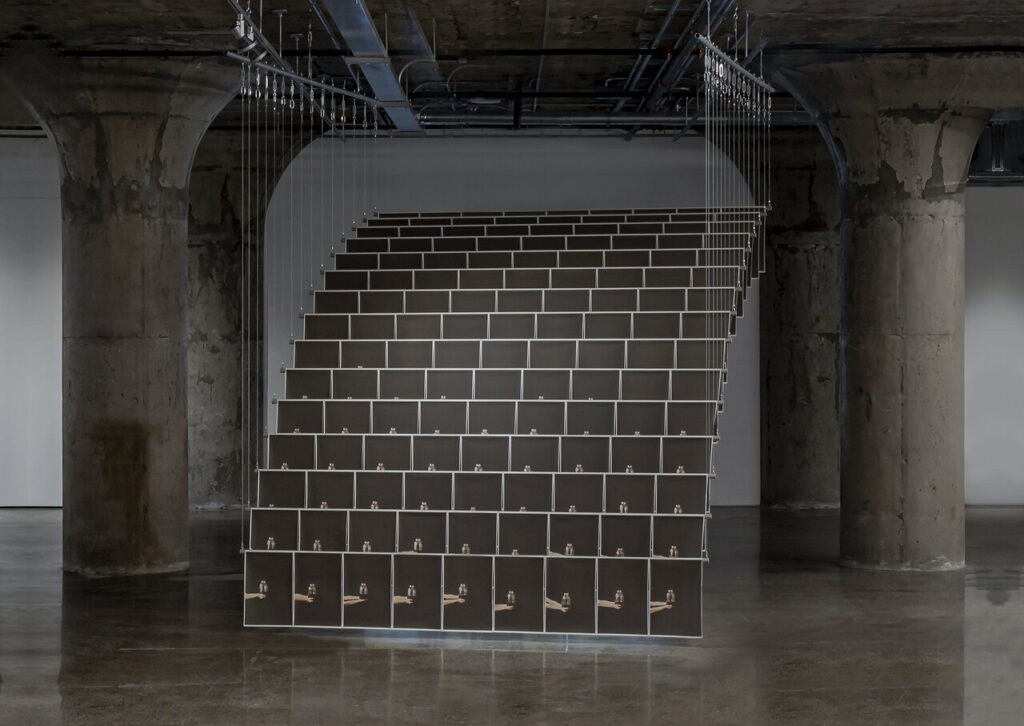
Acts of Erasure at the Museum of Contemporary Art (MOCA), Toronto is a stunning installation that brings two prominent artistic practises together into a dialog. Fatma Bucak and Krista Belle Stewart come from different geographical areas and heritages. Bucak was born in Iskenderun, on the Turkish-Syrian border and identifies as both Kurdish and Turkish. She now resides in London, UK. Stewart is a member of the Okanagan Nation in British Columbia. Their thoughtful work integrates interlocking layers of the historical, the political and the emotional.
Stepping into the warehouse-like exhibition hall at MOCA, Fatma Bucak’s installation caught my eye immediately. Titled And so we were told (2020) is mounted on fifteen curving layers with nine images in each row. It gives the impression that it might rotate so the images would come up to eye level. However, that proves to be an illusion. I have to kneel to see the pictures. They each show the artist’s arms holding a glass jar containing dirty water. The work itself doesn’t send a clear message, so it seems that we need to uncover the layered narratives within. The stained water from the washed-out ink of 84 Turkish newspapers – published in the days following the “basement massacre” without talking about it — is bottled and held for all to witness. Bucak said she wanted to turn the government propaganda into liquid, to transform it into different layers, showing how intimidating she finds the way propaganda manipulates society.
Bucak’s works are often poetic and beautiful. As she explained, she is not afraid of beauty and talking of politics doesn’t require ugliness as the stories are already ugly. A Study of Eight Landscapes (2012 – 2016) is a photo series where Bucak reconsiders how some governments use borders to physically suppress people from certain national, ethnic or gender backgrounds. Her images capture experiences she shared with people who lived at borders or tried to cross them, often facing political and military violence.
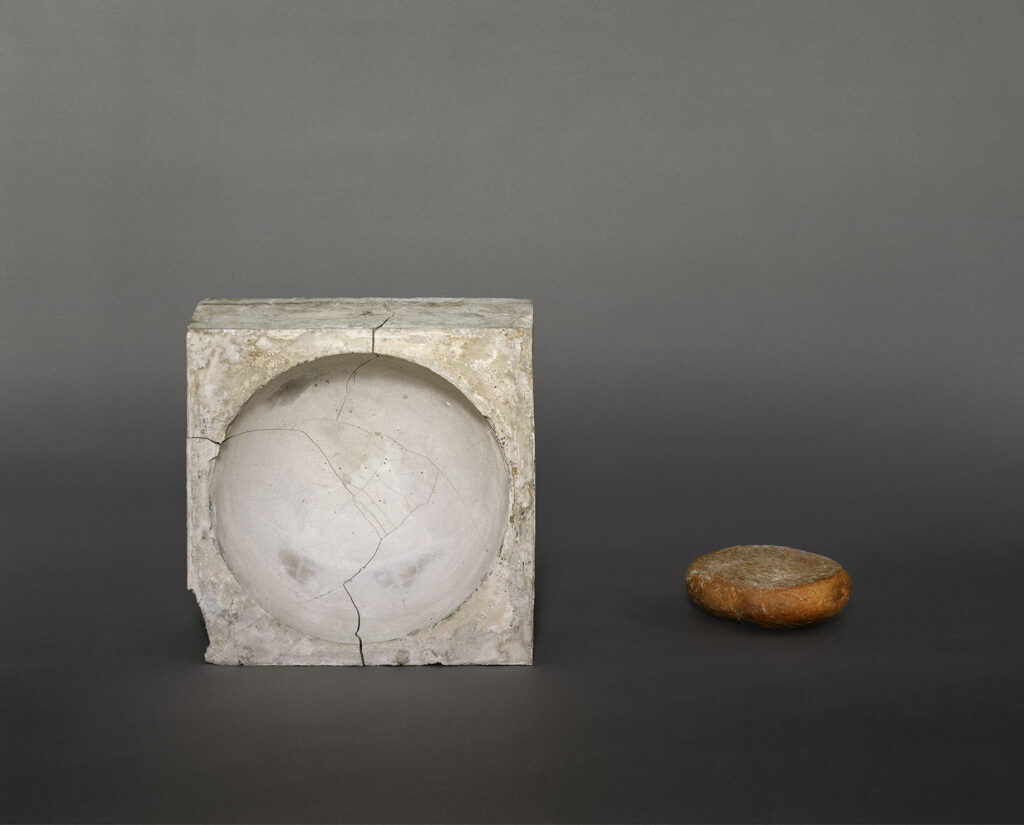
The series depicts discarded objects found along the borderlands of Turkey-Armenia, Syria-Turkey and US-Mexico. Bucak collected and organized them into sculptural compositions in her studio. The depicted items seem real at first but they are more abstract and layered. An incomplete history (2014), shows a bread beside the stone in which it was baked. The cracked stone form has been used many times — a history in itself. Bucak treats her subjects with such respect, their silence is so meditative that it feels like a prayer. Regardless of the absence of people, these artifacts talk about human lives and objects sometimes unveil aspects of history that humans can’t. Beyond their aesthetic appearance we still keep wondering about the hidden narrative.
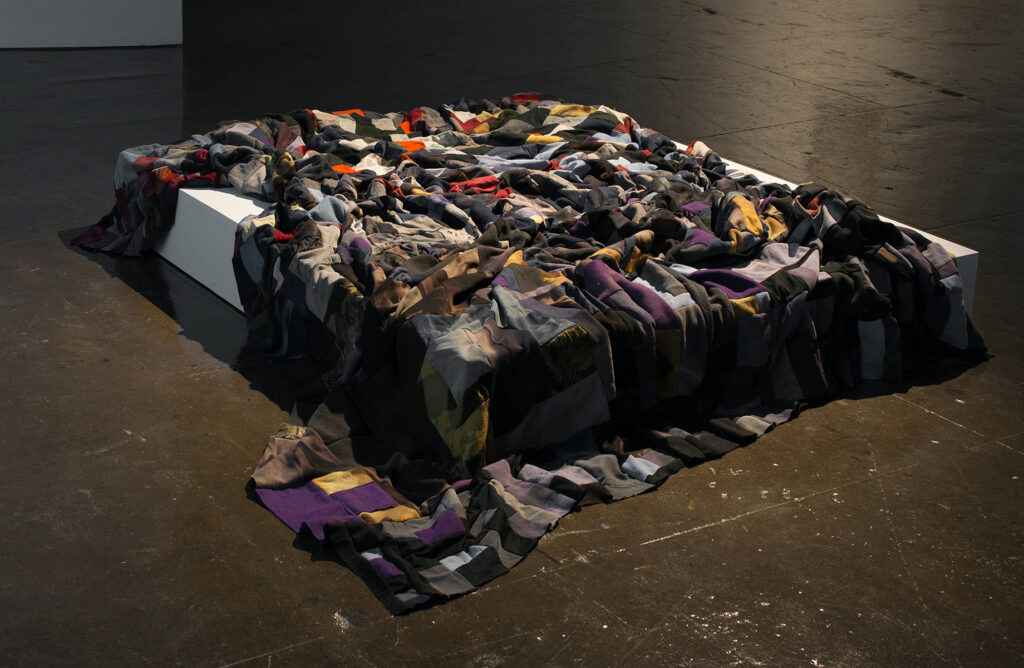
There is a rich and sorrowful story behind De Silencio. The artist travelled the path of Latin-American migrants across the US-Mexico border in August, 2015. These people were pressured into leaving their country and entering a state of limbo. It is a difficult journey and people often discard their unnecessary belongings, especially clothes, along the road. Bucak collected many of them and a Mexican migrant woman cut them into small pieces and sewed them together into a patchwork quilt. The quilt is colorful and happy looking, the stories behind it are not. Together they create a juxtaposing, cruel beauty.
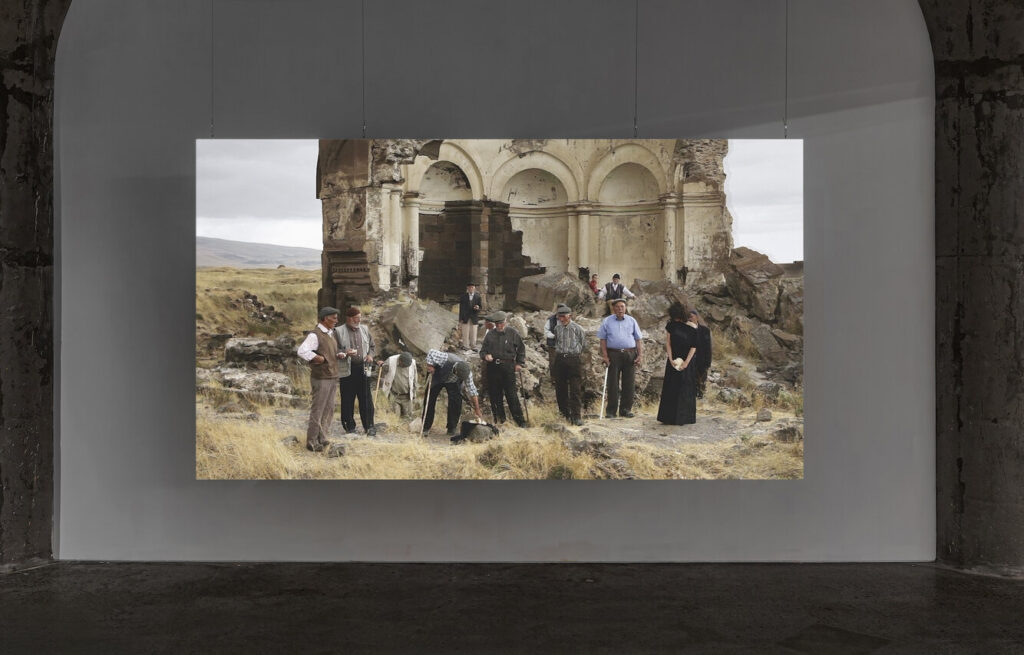
Blessed are you who come, another video performance (2012, 8’42”), takes place in a Turkish border village; a place of a contentious genocide. There is a lot of tension in this complex scenario. A young woman dressed in black performs the ritual of breaking bread and passing the pieces around. Her actions remind us of the Catholic ceremony of communion. In front of a bombed-out Christian church thirteen old men stand expressing confusion over the woman’s gestures. We can feel the estrangement of the participants, the mistrust between Armenians and Turks, the vulnerability of the young woman who couldn’t predict the reactions of these traditional Muslim men. This performance is very disquieting, but it also gives us the hope of human reconnection.
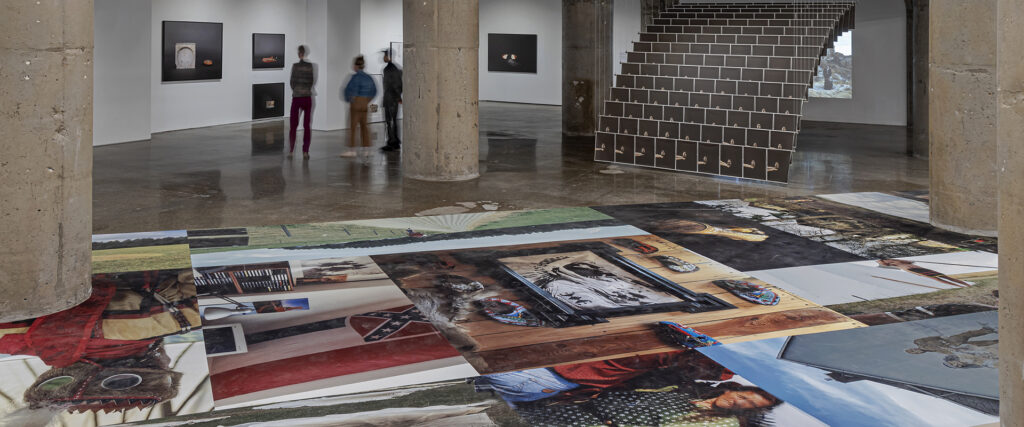
Krista Belle Stewart also addresses rituals, however very different ones. Truth to Material (2019 – ongoing) is a project that involves two artifacts, a video and a series of large photographs printed on vinyl, covering the concrete floor. As a European the respect for art is deeply rooted in me and stepping on artwork is a taboo. Stewart’s work was a challenge for me that I could not overcome without knowing how and where these images were taken and the cultural and ethical layers within them. Understanding this work, with its complex context, was the real challenge.
Stewart visited Germany in 2006 and 2007 when she started to research a subcultural group calling themselves “Indianers”. The “Indianers” belong to a cult built around Karl May, a 19th century writer who created an idealized vision of First Nations people. May’s series of novels depict the adventures of Winnetou, an Apache youth and his German advisor Old Shatterhand – two fictional characters. May’s stories were created under the influence of German romanticism. He was looking for innocent and heroic people, so he invented them and put them into a past before colonialization would ruin them. These ‘bands’ imitate North American Indigenous nations, painstakingly copying their costumes and living in teepees for a week while re-enacting their rituals. I wonder why these invented ‘heroes’ are so popular in Europe even these days. What is it that people appreciate so much in these stories? Honestly, I don’t get it; I guess it’s a boy thing.
Stewart attended a summer gathering with the “Indianers” in 2019. Returning to Germany after thirteen years she still found their ceremonies challenging. As an artist, she wanted to witness what these “Indianers” do and found it very difficult emotionally. “What’s weird about the experience,” she told Philip J. Deloria in an interview for Aperture (2019) “is that they are real . . . but I can’t quite believe it. Because we are real too.” It is a contradiction she still hasn’t overcome. But no matter how uncomfortable she felt in the situation, she has always engaged her subject in good faith and with an open mind.
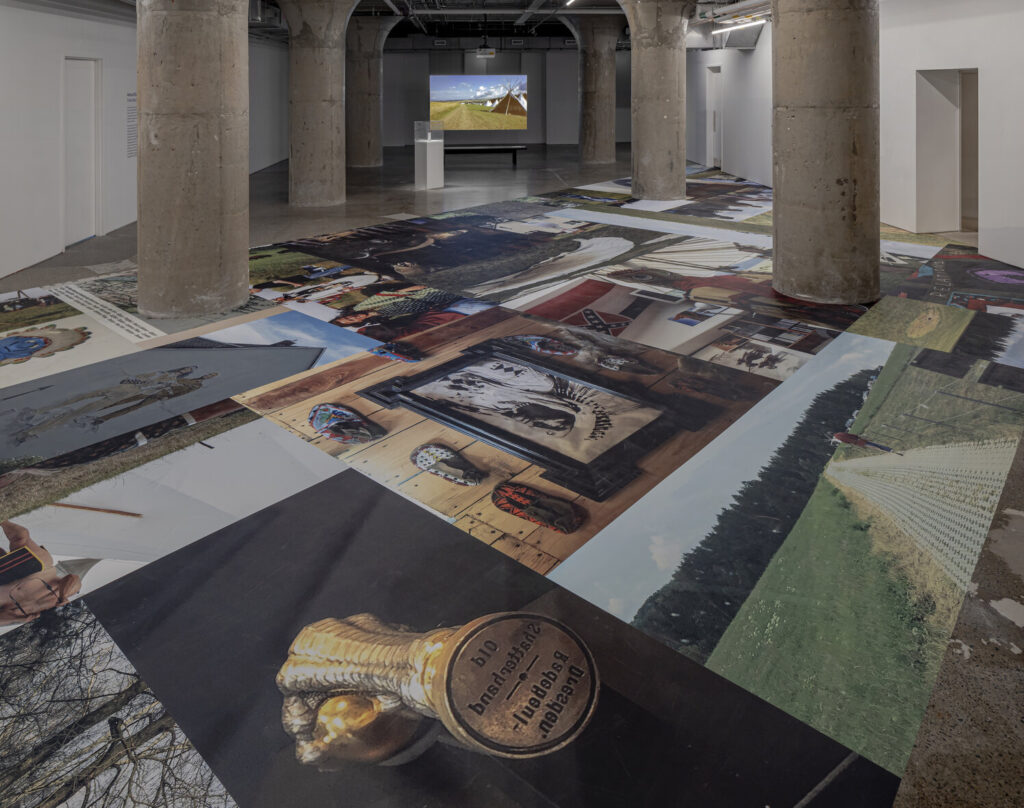
The title of the project Truth to Material comes from Susan Hiller’s theory of ‘truth to materials’ indicating a complex negotiation between an artist’s idea and the one, very particular way it could be realized. Stewart found the true way of presenting her photographs by mounting them on the floor of MOCA. The viewers have to walk on the photographs, scuffing the surface with their feet. The cracks caused by their steps become symbolic as images of faces and rituals of the Indianers become blurry – an act of erasure.
In 2019 she was presented with a dress made by a friend she met in 2007 specifically for Stewart. The Gift (2019) is displayed in a vitrine, so much like regalia in a museum but here it is clearly a faux relic. For Stewart it involves the past, present and future of Indigenous people with all their historical and political issues – not an easy thing to bear or wear.
What makes German people dress up like Indians and try to copy their ways for a week? It is much more than a summer camp, as the Indianers have 40,000 members in 40 groups. A “hobbyist” group could be considered innocent. The truth behind Indianers is less faultless. Their enactments are built upon their fantasies and truly misrepresent the old and rich cultures and nations who faced colonial displacement and undergo racism even now. There is also a danger that their false representation will overshadow or even replace the true history and present life of these Indigenous people. For those German “Indianers” their own history is difficult to face too. Their present life may be boring and taxing. Their desire for escapism is understandable. But as Stewart concluded in her conversation with Gabrielle Moser of MOCA (October, 2020), what the Indianers do “is not funny, it is not OK. They should find a different hobby.”
*Exhibition information: Acts of Erasure, Perceptions of heritage, indigeneity, and political identity, Fatma Bucak / Krista Belle Stewart at Museum of Contemporary Art, Toronto, October 1, 2020 – ongoing. The exhibition is organized in partnership with Scotiabank CONTACT Photography Festival.
